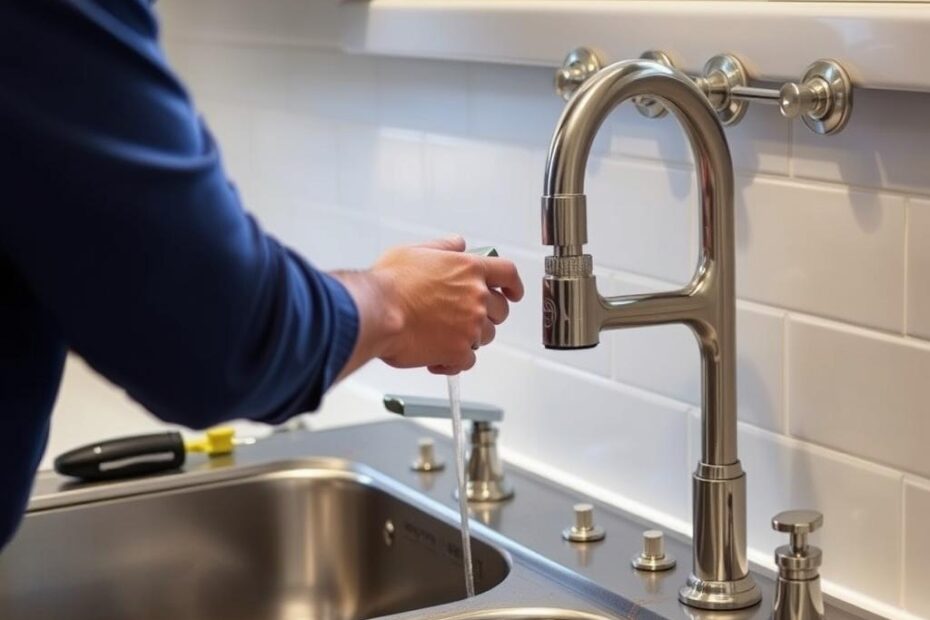If you’re like me, you love spending time in your kitchen, whipping up delicious meals and concocting new recipes. But there’s this one thing we often overlook until it’s too late: our kitchen faucet. From washing vegetables to cleaning dishes, it’s an integral part of our day-to-day kitchen activities. But how do we know when it’s time to replace this trusty fixture? Let’s dive in and explore this topic.
The Tale Of My Old Faucet
So, here’s the deal. My kitchen faucet worked perfectly fine for years until one day, it didn’t. It dripped, splashed, and made weird noises that haunted my dreams. At first, I tried to ignore it, thinking it was just a minor issue. But boy, was I wrong! A leaky faucet is more than just an annoyance—it can be a signal of bigger issues.
The Drip, Drip, Drip…
A leaking faucet does more than waste water; it hikes up your water bill too. You might think, “Ah, it’s just a few drips. No biggie.” But those drips can add up. According to the EPA, a faucet that drips once per second can waste over 3,000 gallons per year! That’s enough water to take more than 180 showers. Crazy, right?
Signs A Replacement Is Needed
There are telltale signs that can indicate your faucet’s days are numbered. Here they are:
- Leaks and Drips: You’d be surprised how many times folks ignore these.
- Low Water Pressure: If your faucet is coughing up weaker streams of water, it could be time for a new one.
- Rust and Corrosion: Unsightly and a clear indicator you need a trade-in.
- Mold Growth: Spotting mold on or around the faucet? Eew, that’s gotta go.
- Wobbly Faucet/Frequent Repairs: If you keep tightening screws or the base is loose, time’s up for the old fella.
My Eureka Moment
I remember staring at my faucet, realizing it had more problems than solutions. I decided it was time to replace it. Researching new faucets became an adventure, but it was information overload at times. So, I want to simplify this journey for you.
Types Of Kitchen Faucets
Choosing a new kitchen faucet isn’t as basics as it sounds. There are different types, each with its pros and cons. Here’s a rundown:
- Single-Handle Faucets: These are the most common and straightforward to use. You can control the water flow and temperature with just one lever. Great for when you only have one hand free.
- Double-Handle Faucets: These have separate levers for hot and cold water. They offer precise temperature control but can be trickier to install.
- Pull-Down and Pull-Out Faucets: Handy for washing dishes and veggies. The spout pulls out or down, flexible and versatile.
- Touchless Faucets: The coolest innovation! With a wave of your hand, water flows. Great for hygiene and efficiency.
- Commercial-Style Faucets: High-performance, durable, and look utterly professional. Ideal for those who cook a lot.
Material Matters
Faucets come in various materials, and picking the right one is essential. Here’s a brief on popular options:
- Stainless Steel: Durable, rust-resistant, and easy to clean. Classic choice.
- Brass: Long-lasting and resistant to water damage. It often comes with a price but totally worth it.
- Bronze: Fantastic for a rustic or classic look. However, require regular maintenance.
- Plastic: Budget-friendly. However, not the most durable for long-term usage.
Installation Considerations
Replacing a faucet isn’t a job for everyone. Especially if you’re not into DIY stuff—it could become a nightmare. Here’re a few things to think about:
- Number of Holes: Look at your sink or countertop. Some faucets need more holes to install than others.
- Water Lines: Check if your new faucet’s water supply lines match your current setup. This can save a lot of headache.
- DIY or Professional: If it’s overly complex, consider hiring a professional plumber. It costs more, but ensures proper installation.
Saving Water, Saving Money
Opting for a new faucet can also be an eco-friendly choice. Nowadays, faucets are designed to be more water-efficient. Look for:
- WaterSense Label: This indicates the faucet meets EPA’s criteria for water efficiency. It’s a great way to save on bills and conserve water.
- Aerators: Use less water without compromising water pressure. Many modern faucets come with these.
My Final Thoughts
Replacing a kitchen faucet isn’t something we think about daily. But ignoring problems can lead to bigger headaches down the road. After I switched mine out, everything improved. Water bills went down, my sink area looked fresher, and cooking was a more enjoyable experience. If you see any of the signs mentioned, do yourself a favor—don’t wait.
Sometimes a small change, like updating your faucet, can make a world of difference in your kitchen’s functionality and appearance.
In sum, listen to your gut and the tips shared here. When it’s time, it’s time. But don’t stress. With the right guidance, even something as mundane as replacing a kitchen faucet can become a smooth (and slightly thrilling) project.
Happy cooking, and here’s to no more drips!
